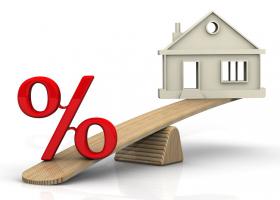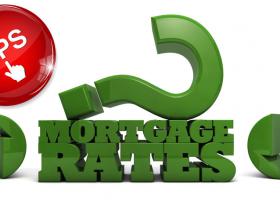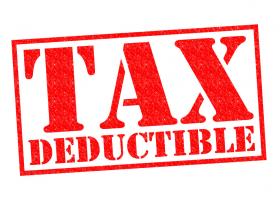Mortgage Options

Portable mortgages
Porting a mortgage refers to transferring some or all of the terms and conditions and outstanding balance of the mortgage on your existing home to a new property while remaining with the same lender.
Homeowners often port their mortgages when they have a lower interest rate on their existing mortgage than is available for a new mortgage. By porting your mortgage to your new property, you can usually avoid prepayment charges for breaking your mortgage contract early.
Example Mr. Smith has a cottage on Echo Lake with a $350,000 mortgage, at 4% interest a 5 year term and a 25 year amortization period.
At the end of year 2, Mr. Smith wants to have a cottage on Lake Muskoka. Since the time of taking the original mortgage, prevailing interest rates have risen to 6%. Rather than taking a new mortgage, incurring prepayment penalties and higher interest rates, Mr. Smith’s mortgage has a portability feature.
Mr. Smith ports his mortgage, on its original terms, to the new cottage. The interest rate will remain at 4%, there will be no prepayment penalties and the mortgage term will have 3 years remaining. Mr. Smith will pay a few hundred dollars in bank fees for the privilege to transfer the mortgage.
Check with your lender to see whether your mortgage is eligible for porting and whether any conditions or restrictions apply. Porting a mortgage really only makes sense if your current mortgage rate is lower than the ones being offered on the market. Otherwise you might as well pay to break the contract (usually a 3 month penalty) and renew.
Assumable mortgages
An assumable mortgage allows a home buyer to take over the seller’s existing mortgage along with the property. The terms of the original mortgage must stay the same. In most cases, the lender must approve the transfer as well as the buyer who wants to assume the mortgage.
If approved, the buyer will take over the remaining mortgage payments to the lender. Lenders may charge the buyer a fee to assume the mortgage. A Real Example An assumable mortgage works much like a sublease in rental property. In a sublease, someone under a lease will in turn lease out the property to a third person, provided they have the approval of the landlord. In an assumable mortgage, the owner of property sells the property to a third individual. But rather than requiring the buyer to obtain a new mortgage, the buyer will assume the mortgage of the seller. For instance, a seller has a cottage worth $425,000 with an assumable mortgage balance of $300,000.
A buyer has $125,000 in cash, but believes the seller has good terms on the mortgage. Instead of the buyer obtaining his own mortgage, he pays $125,000 directly to the seller and assumes the mortgage of $300,000, making payments to the bank as the seller had. The buyer now owns the cottage, and the bank now seeks repayment of the mortgage from the buyer.
One of the biggest advantages in assuming a mortgage is getting a lower rate than what might be currently available on the market!
Cash Back Mortgage Option
Cash back is an optional feature that provides you with a percentage of your mortgage amount in cash right away. While it can help you pay for things you’ll need when getting a new home, such as legal fees or furniture, you usually have to pay a higher interest rate to get a cash back option on your mortgage.
The interest charges you will pay due to a higher interest rate could cost you more than the money you receive as cash back. The lender can impose certain restrictions on the cash back. You may not be allowed to use cash back funds as part of your down payment. If you decide to renegotiate, transfer or renew your mortgage before the end of the term, you may be asked to repay some or all of the cash back amount. Shop around and ask about all the conditions before applying for cash back on a mortgage.
Payment options details
Payme?nt frequency | Description |
|---|---|
Monthly | One payment per month for a total of 12 for the year. |
Semi-monthly (twice a month) | Two payments per month for a total of 24 for the year. |
Biweekly (every two weeks) | A payment every two weeks. Since there are 52 weeks in a year, the total number of payments over the year is 26 (52 ÷ 2). This option keeps the total payment over the year the same as with the monthly payment (monthly payment x 12 months ÷ 26). |
Accelerated biweekly | A payment of half the monthly payment every two weeks. Since there are 52 weeks in a year, you will make 26 payments a year (52 ÷ 2). To calculate the amount of your accelerated biweekly payments, divide your monthly payment by two (for example, $1,000 ÷ 2 = $500). |
Weekly | One payment per week for a total of 52 payments for the year. The total annual payment remains the same as with the monthly payment (monthly payment x 12 months ÷ 52). |
Accelerated weekly | A payment of one quarter of the monthly payment every week. To calculate the amount of your accelerated weekly payments, divide your monthly payment by four (for example, $1,000 ÷ 4 = $250). |
Example: Monthly vs. accelerated biweekly
John is trying to decide between paying his mortgage monthly and paying accelerated biweekly.
Details
- ?Mortgage principal: $200,000
- Amortization: 25 years
- Interest rate: 4.5% for the entire mortgage amortization period.
Monthly and accelerated biweekly payment comparison
| Monthly | Accelerated biweekly |
|---|---|---|
Number of payments per year | 12 | 26 (52 weeks a year ÷ 2) |
Payment | $1,107 | $553 |
Total payments per year (principal and interest) | $13,283 | $14,390 |
Interest paid over the amortization period | $132,084 | $112,053 |
Interest saved | - | $20,031 |
Number of years to repay the mortgage | 25.0 | 21.7 |
Years saved | - | 3.3 |
With the accelerated biweekly payments, John will pay off his mortgage 3.3 years faster and save more than $20,000 in interest.











